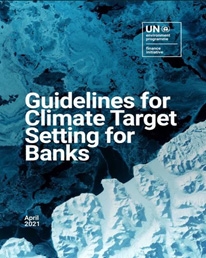It is essential to take specific actions to help fight climate change and protect the environment, as essential preconditions for long-term sustainable development.
In this perspective, the Bank has adopted a climate strategy and has joined the Net-Zero Banking Alliance (NZBA), as a climate accelerator for the identification of targets useful for reducing the financed emissions.
"Aware of the commitment that membership to NZBA entails, we are ready to continue on the path towards sustainable development, attentive to the climate transition. This participation represents a great opportunity to innovate the way we do business, while allowing us to remain close to the territory and the communities in facing new challenges, consistently with our history"
Mario Alberto Pedranzini
Chief Executive Officer of Banca Popolare di Sondrio
Here the Press Release of the membership.
Therefore, in line with our Environmental Policy, we have set a series of climate-environmental targets to contribute to a green transition, developing coherent and increasingly ambitious actions.
The Environmental Policy identifies the Bank's approach to managing environmental issues, illustrating the measures and interventions it intends to adopt over time. The Group considers environmental impacts as a relevant area and therefore intends to:
- reduce the effects on the environment generated by the consumption of resources, the production of waste and other direct impact activities
- manage the effects deriving from indirect impact activities, related to products and services for customers.
As evidence of our commitment, we support the Recommendations of the Task Force on Climate-related Financial Disclosures (TCFD) through the publication of the first TCFD Report, a document that communicates financial information relating to climate in a coherent and transparent way.
Key numbers
Initiatives
-
Net-Zero Banking Alliance
The Net-Zero Banking Alliance represents a path of decarbonization and a long-term vision, to be achieved by 2050. To do this, we have to start acting now.
Net-Zero means cutting greenhouse gas emissions down to zero, achievable through:
- a significant reduction of direct and indirect emissions;
- the balance between remaining or non-reducible emissions produced and emissions removed from the atmosphere.
Net-Zero banking Alliance (NZBA) is a United Nations-led initiative that aims to accelerate the sustainable transition of the global banking sector. It requires participating banks to commit to aligning their lending and investment portfolios to achieve net-zero greenhouse gas emissions by 2050, in line with the targets set by the Paris Agreement on climate change and science-based decarbonization scenarios.
By joining the NZBA, Banca Popolare di Sondrio commits to:
- Aligning lending and investment portfolios to net-zero scenarios by 2050, promoting the transition of their customers;
- Within 18 months, setting targets achievable by 2030 and 2050 for carbon intensive industries;
- Annually reporting progress towards targets and the transition strategy approved by the Board of Directors.
-
BPS climate strategy

-
TCFD Report
Since 2023, BPS supports the Task Force on Climate-related Financial Disclosures (TCFD), which is an international organization that encourages companies to be more transparent about the financial risks and opportunities associated with climate change.
The Bank has undertaken to report the environmental and climate-related risks and opportunities, as well as the targets, in the TCFD Report, attached to the NFS, thus aligning with international best practices. In particular, the TCFD recommends the use of a scenario analysis precisely in order to assess the risks related to climate change, so as to ensure a clear direction towards a reduction of direct and indirect impacts. The guidelines drawn up by the TCFD aim to measure the adequacy of the climate strategy of member companies and to support them in communicating the relevant aspects relating to the climate promptly and transparently.

-
Climate and environmental risks
What are C&E risks?
Climate-environmental risks are to be understood as the financial risks generated by the Bank's exposures to counterparties that suffer impacts deriving from climate change and environmental degradation (such as air pollution, water pollution, scarcity of fresh water, soil contamination, biodiversity loss and deforestation), as they are exposed to extreme weather condition or possible changes in their asset value. Managing these risks represents a challenge for the financial sector, stimulated by growing regulatory pressure and by the increasingly widespread occurrence of extreme weather events.
There are two categories of C&E risks: physical and transition risks.Transition risk
Financial loss directly or indirectly related to the transition to a low-carbon and more environmentally sustainable economy.
Physical risk
Financial impact of climate to frequent extreme weather events (‘acute’ physical risk) and to gradual climate changes (‘chronic’ physical risk), as well as environmental degradation, air, water and soil pollution, water stress, loss of biodiversity and deforestation.

The Bank has adopted a specific “Climate and environmental risks general Regulation " to formalize the governance, management and control of C&E risks.

-
Calculation of emissions
We have calculated the GHG emissions deriving from the corporate loans portfolio and from our investments portfolio to understand the carbon footprint of our financing activities.

As of 31.12.23

Financed sectors with the greatest emissive intensity

-
Pre-target set on carbon intensive sectors
Some «pre-targets» set on carbon intensive sectors used for evaluating the commitment to NZBA

Note: Preliminary analysis carried out on the loans portfolio at 31/12/2022 (baseline) in which Scope 1, 2 and 3 emissions were included and UNEP FI and IEA scenarios applied. The pre-targets, aimed at CO2 absolute reduction, have been set up by identifying a mix of companies -in carbon intensive sectors suggested by NZBA- covering most of the financed emissions.
-
Green Financing
11 Green financing lines supporting environmental investments.

| Attachment | Size |
|---|---|
| Environmental Policy | 1022.93 KB |
